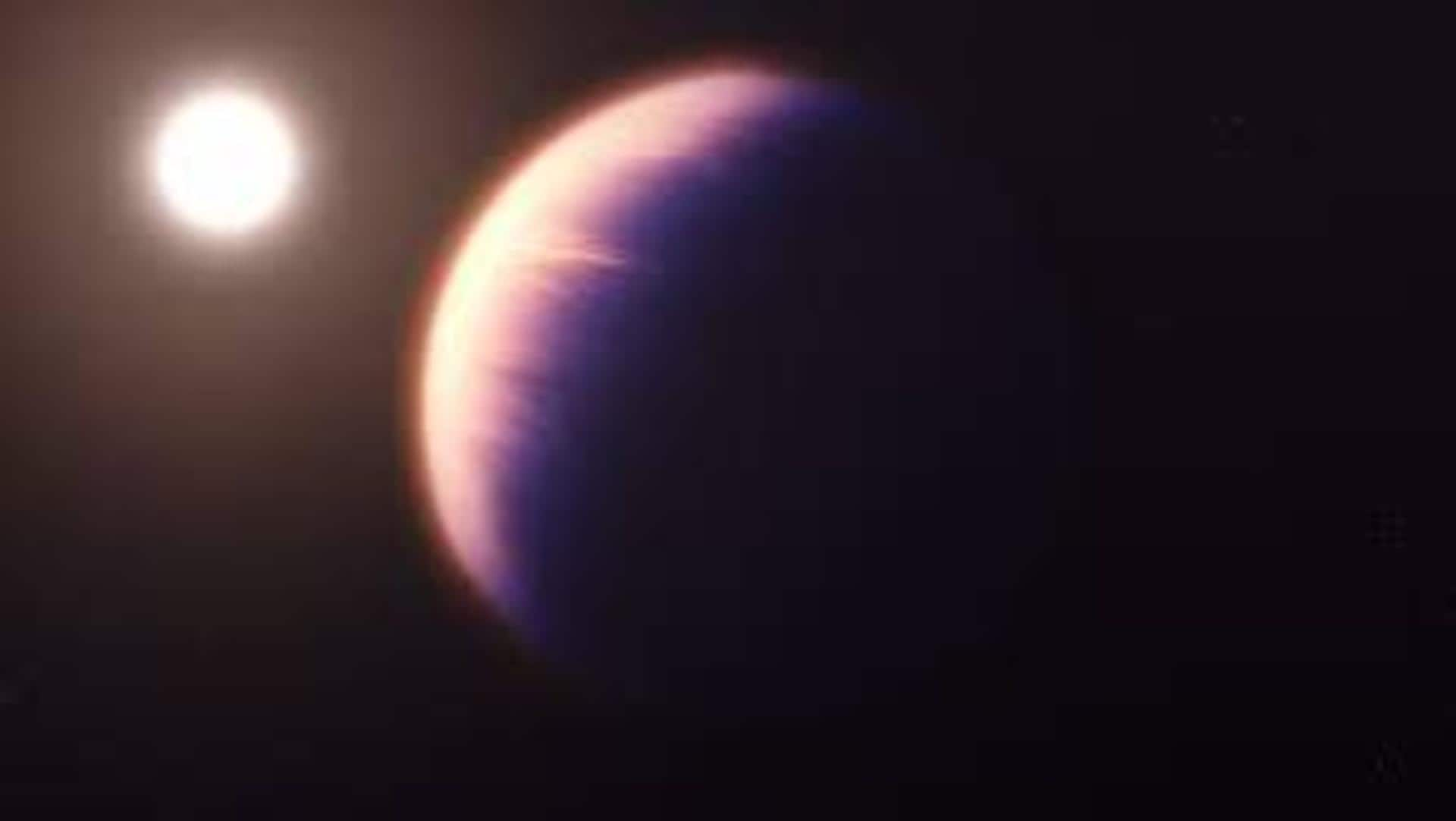
NASA's James Webb reveals 'game-changing' details of an exoplanet atmosphere
What's the story
NASA's James Webb Space Telescope has revealed immense details of exoplanet WASP-39b, also called Bocaprins, for the first time ever.
The space observatory's "exquisitely sensitive instruments" have helped establish molecular and chemical profiles of the 'boiling Saturn-like' exoplanet, which lies 700 light-years from the Earth.
Some patchy clouds and elements such as water, carbon monoxide, and sulfur dioxide, have been identified on the exoplanet.
Context
Why does this story matter?
WASP-39b becomes the first ever exoplanet to be explored in such great detail after the eight planets in our very own Solar System.
It has a "boiling" temperature of 900 degrees Celsius since it is eight times closer to its star than Mercury is to the Sun.
Bocaprins is about one-third the mass of Jupiter but its composition is akin to Saturn.
Findings
One of the initial gases spotted was carbon dioxide
Earlier in July, JWST observed the exoplanet for over 40 hours. It detected carbon dioxide, marking the first time that gas was ever detected on an exoplanet.
This time, elements including water, carbon monoxide, sodium, and potassium have been spotted while the most intriguing discovery is sulfur dioxide.
This makes its composition analogous to that of Saturn. However, it does not have detectable rings.
Explanation
Presence of sulfur dioxide suggests the occurrence of chemical reactions
The presence of sulfur dioxide suggests the possibility of a chemical reaction occurring in WASP-39b's atmosphere.
As light from its star, smaller than the Sun, interacts with the exoplanet's atmosphere, a photochemical reaction occurs. The atmospheric water splits into hydrogen and hydroxide, which further reacts with hydrogen sulfide to produce sulfur dioxide.
It can be compared to how sunlight produces ozone in Earth's atmosphere.
Official words
Previously, photochemical reactions were only investigated in our Solar System
"Photochemistry, because it is such an important process here on Earth, is probably an important process on other potentially habitable planets," says Jacob Bean, co-leader of the observation team.
"We've only been able to test our understanding of photochemistry in our Solar System," he added. "But planets around other stars give us access to completely different physical conditions."
Procedure
Webb's infrared capacity has helped in establishing a chemical profile
Multiple instruments on Webb helped capture the star's light as it penetrated through the exoplanet's atmosphere.
"Different types of chemicals in the atmosphere absorb different colors of the starlight spectrum, so the colors that are missing tell astronomers which molecules are present," explained NASA.
The telescope's infrared capacity has allowed it to detect these chemical fingerprints, which isn't possible in visible light.
Information
There is an incomplete cloud cover on the exoplanet
Another surprising observation is that the cloud cover on WASP-39b is not uniform, which has never been reported before in an exoplanet. Approximately only 60% of the exoplanet is covered by clouds.